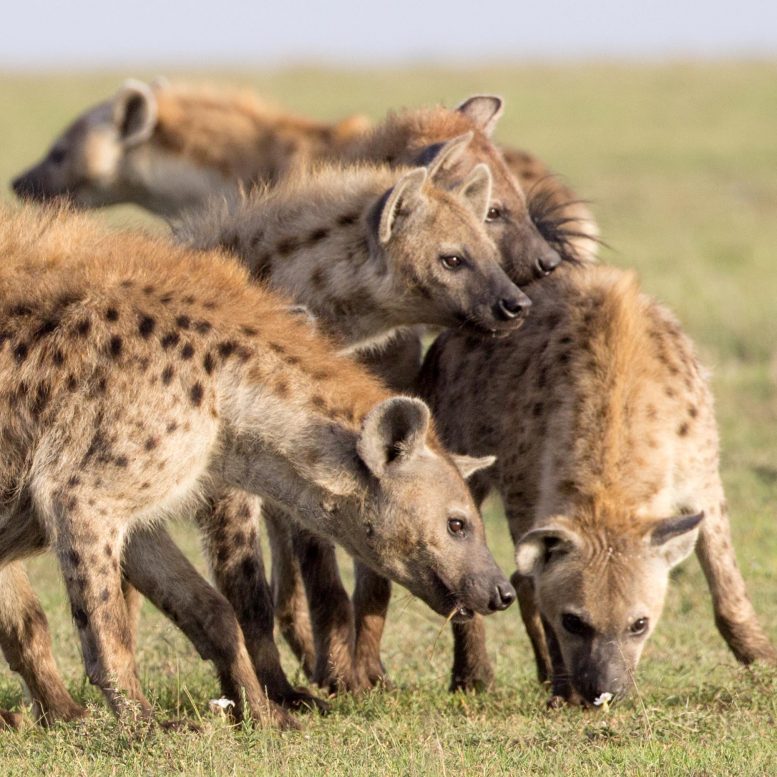
Using 27 years of detailed data on hyena social interactions, a team led by Penn biologists nailed down a pattern of social network inheritance and its implications for social structure, rank, and survival. Credit: Kate Shaw Yoshida
Using 27 years of detailed data on hyena social interactions, a team led by Penn biologists nailed down a pattern of social network inheritance and its implications for social structure, rank, and survival.
Hyenas are a highly social species, living in groups that can number more than 100. But within their clans, there is order: A specific matrilineal hierarchy governs societies in this species where females are dominant to males.
While researchers have intensively studied the social structure of hyenas and other animals, it’s only recently that scientists have begun to investigate how this structure arises. A new study led by Penn biologists, which relies upon 27 years of detailed observations of hyena social behavior collected by researchers at Michigan State University, pulls back the curtain on how social order comes to be.
Their findings show that hyenas inherit their mother’s social networks, so their social connections resemble their mother’s. However, offspring of higher-ranking individuals more faithfully replicate their mother’s interactions, winding up with social networks that more closely resemble their mother’s than do offspring of females that rank lower on the clan’s social ladder. The team reported their findings in the journal Science.
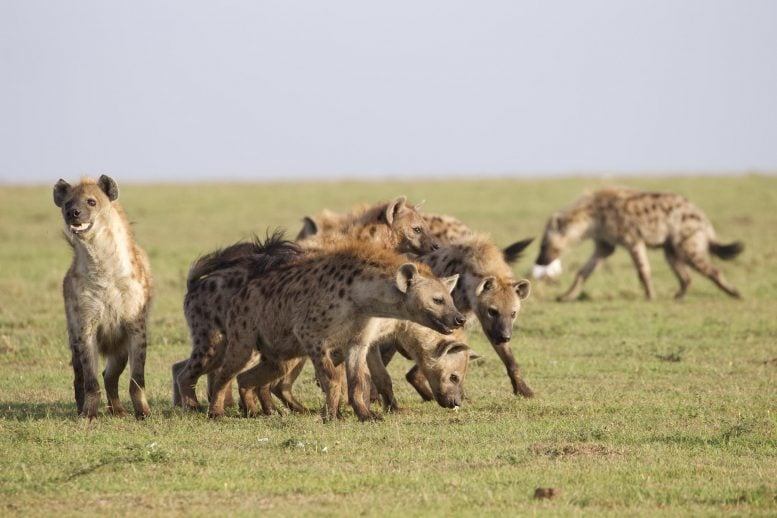
Hyenas benefit from being born to high-ranking mothers, from whom they inherit their social networks, according to research led by biologists from Penn and Michigan State University. Credit: Kate Shaw Yoshida
“We knew that the social structure of hyenas is based in part on one’s rank in the agonistic hierarchy, which we know is inherited from mothers,” says Erol Akçay, a study coauthor and associate professor in Penn’s School of Arts & Sciences. “But what we found, that affiliative, or friendly interactions, are also inherited, hadn’t been shown.”
“This is a very simple process of social inheritance that we show works very, very well,” says Amiyaal Ilany, a senior lecturer at Israel’s Bar-Ilan University. “Individuals that were born to higher rank are more accurate in their inheritance, and they have good reason to do so. It fits well with what is already known about inheritance of rank. There are very strict rules about what place you sit in the hierarchy if you are a hyena.”
The work builds on a theoretical model of social network inheritance Akçay and Ilany developed in 2016. According to that simple framework, animals establish their networks by “social inheritance,” or copying their mother’s behaviors. The model fits well with snapshots of real-world social networks from not only hyenas but also three other social species: bottle-nosed dolphins, rock hyrax, and sleepy lizards.
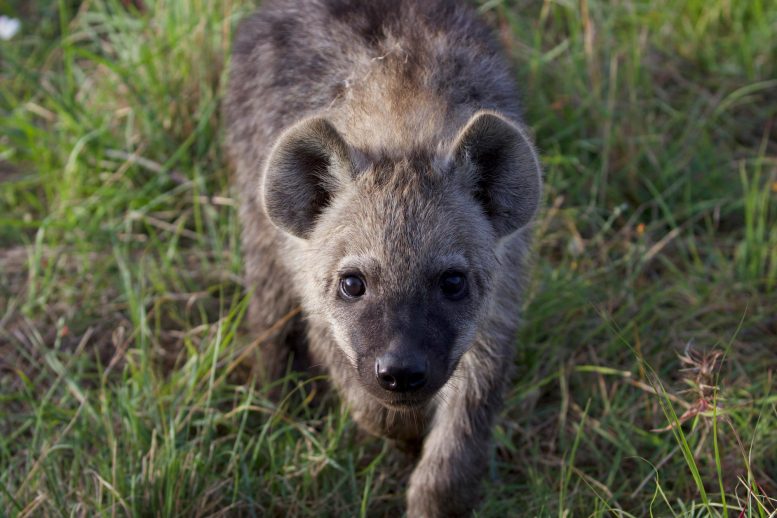
Young hyenas essentially duplicated the social group of their mothers, even as cubs grew older and stopped spending as much time in close proximity to their moms. Credit: Kate Shaw Yoshida
In the new work, the team aimed to refine their model to better understand the intricacies of social inheritance in hyenas. They were fortunate to have a robust dataset collected by Akçay and Ilany’s coauthor, zoologist Kay Holekamp of Michigan State University, consisting of 27 years of detailed accounting of a clan’s social interactions.
“We realized we could use that dataset to directly test our model, to see if social ties are inherited or not,” Akçay says.
Field biologists from Holekamp’s research group had meticulously tracked how hyenas in a clan interacted, including who spent time with whom as well as the social rank of each member. To do so, researchers spent months getting to know each member of the clan by sight.
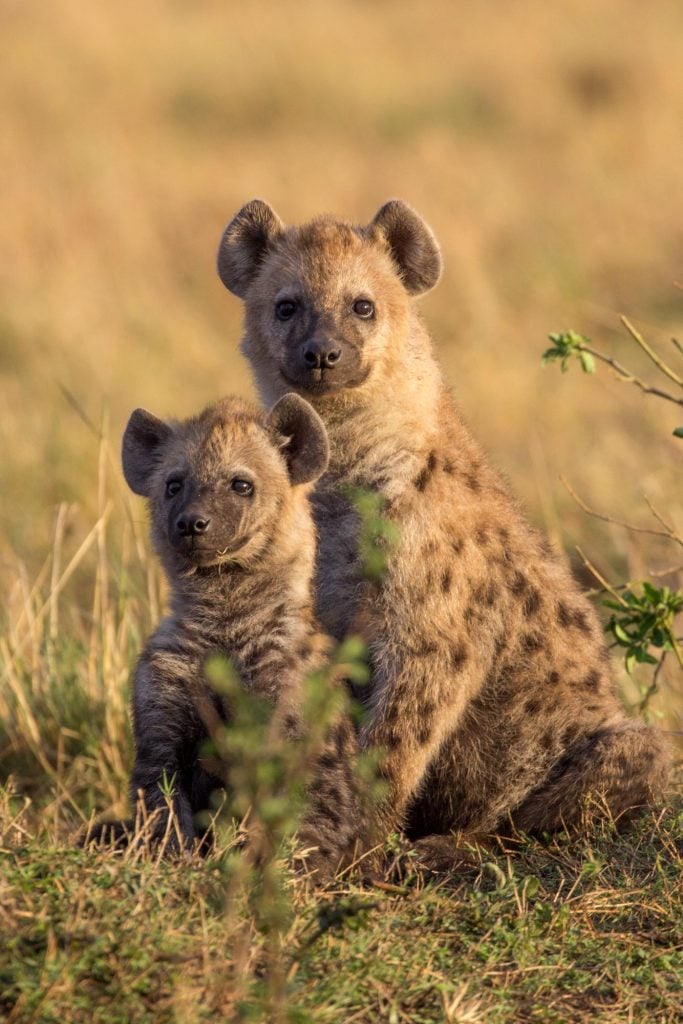
The social rank of a mother was felt deeply by her cubs. “Rank is super important,” says Akçay. “If you’re born to a lower-ranked mother, you are less likely to survive and to reproduce.” Credit: Kate Shaw Yoshida
“They are there year-round, every day, identifying individuals by their specific spot patterns and other characteristics,” Ilany says.
These observations allowed Akçay, Ilany, and Holekamp to map out hyenas’ social networks based on which individuals spent time close together.
“This use of proximity to track social networks isn’t possible with humans, as two strangers might randomly get into an elevator together,” Ilany says. “But with hyenas, if one individual gets within a few meters of another, that suggests that they have a social connection.”
With this picture of each individual’s social affiliations in hand, the researchers compared the social networks of mothers to their offspring. “We developed a new metric to measure social inheritance, to track how faithfully an offspring’s network reproduces its mother’s network,” Akçay says.
Hyena cubs stick close to their mothers for the first couple years of life, so the networks of mothers and their offsprings were quite similar to start. However, the researchers noticed that even as the young stopped spending so much time in close proximity to their mothers they still sustained quite similar networks, particularly for female offspring, who generally remain members of the clan for life. “We have data in some cases showing that the network similarity between mothers and offspring, especially female offspring, was still very high after six or so years,” says Ilany. “You may not be seeing your mother as often, or she even may have died, but you still have similar friends.”
This pattern was especially strong for the higher-ranking mothers, for whom social inheritance was the strongest in the group.
“That is kind of intuitive because things like that happen in human society as well,” Akçay says. “It happens so much we take it for granted. We inherit social connections, and there’s a lot of social science research that shows that this has a huge influence on people’s life trajectory.”
Offspring of lower-ranking mothers were less likely to reproduce their mother’s social networks, perhaps trying to compensate for their more lowly origins by associating with a greater variety of individuals.
There is no genetic inheritance of rank or close associates in this species, so in Holekamp’s opinion one of the most remarkable things about the phenomenon documented here is that the youngsters’ relationships with their mothers’ close associates are all learned very early in life. One explanation for why inheritance of social networks works better for high- than for low-ranking hyenas may be that low-ranking females tend to go off on their own more often to avoid competition with higher-ranking hyenas, so their cubs have fewer learning opportunities than cubs of high-ranking females.
Mother-offspring pairs with more similar social networks also lived longer, the team found. This effect on survivorship may owe to the fact that offspring who spend more time with their mothers and thus replicate their social networks benefit from the increased care.
Social rank also had an effect on survivorship and reproductive success.
“Rank is super important,” says Akçay. “If you’re born to a lower-ranked mother, you are less likely to survive and to reproduce.”
The researchers note that social network inheritance likely contributes to a group’s stability and also has implications for how behaviors are learned and spread through groups.
The study also underscores how factors other than genetics hold sway in key evolutionary outcomes, including reproductive success and overall survival. “A lot of things that are considered by default to be genetically determined may depend on environmental and social processes,” says Ilany.
Reference: “Rank-dependent social inheritance determines social network structure in spotted hyenas” by Amiyaal Ilany, Kay E. Holekamp and Erol Akçay, 16 July 2021, Science.
DOI: 10.1126/science.abc1966
Erol Akçay is an associate professor of biology in the School of Arts & Sciences at the University of Pennsylvania.
Amiyaal Ilany is a senior lecturer at the Mina and Everard Goodman Faculty of Life Sciences at Bar-Ilan University and completed a postdoctoral fellowship working with Akçay at Penn.
Kay Holekamp is a professor of zoology at Michigan State University.
The research was supported by the Israel Science Foundation (grants 244/19 and 245/19), U.S. Army Research Office (Grant W911NF-17-1-0017), Israel-U.S. Binational Science Foundation (grants 2015088 and 2019156), and National Science Foundation (grants 1853934 and 1755089).


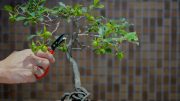
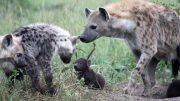





Cubs or pups?